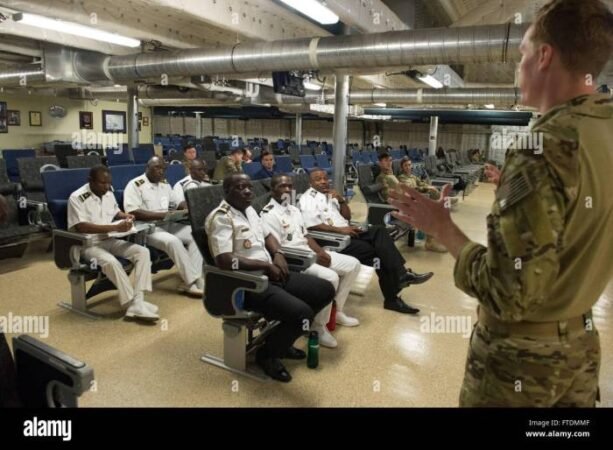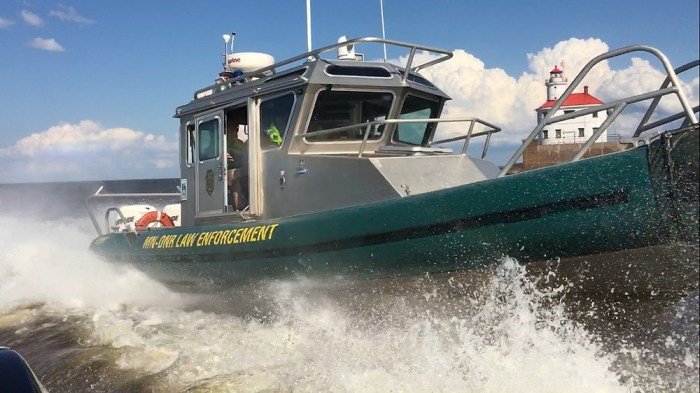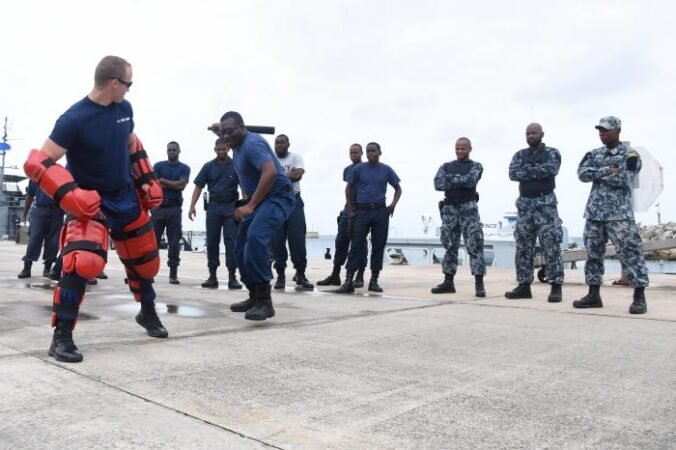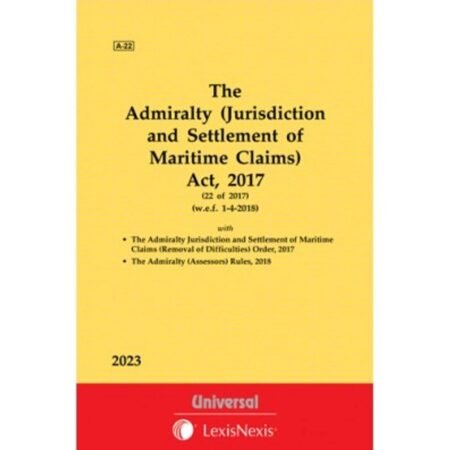
- Job Description: Maritime Law Enforcement Specialist (Coast Guard)
- Law Enforcement Duties and Responsibilities
- Specialized Equipment and Technologies
- International Maritime Law and Cooperation
- Safety and Risk Management
- Case Studies and Examples
- Future Trends in Maritime Law Enforcement
- Conclusive Thoughts
- Questions Often Asked
Imagine a career where you patrol vast oceans, uphold the law amidst treacherous waters, and safeguard our nation’s maritime interests. This is the life of a Maritime Law Enforcement Specialist in the United States Coast Guard. These highly trained professionals are the first line of defense against smuggling, illegal fishing, and other maritime threats, combining law enforcement expertise with seamanship and unwavering dedication to duty. Their roles are diverse, demanding, and profoundly impactful, extending far beyond the typical image of a police officer.
From apprehending smugglers to rescuing distressed mariners, these specialists face unique challenges and utilize specialized equipment and technologies to maintain order and safety across the nation’s waters. This exploration delves into their daily responsibilities, rigorous training, legal authorities, and the critical role they play in international maritime cooperation. We’ll also examine the cutting-edge technologies they employ and the future trends shaping their profession.
Job Description: Maritime Law Enforcement Specialist (Coast Guard)
The Maritime Law Enforcement Specialist (MLE) in the U.S. Coast Guard plays a crucial role in ensuring maritime safety and security. These highly trained professionals are responsible for enforcing federal laws and regulations within the nation’s waters and on board vessels. Their duties extend far beyond simple patrols, encompassing a wide range of activities critical to national security and the well-being of the maritime community.
Typical Day-to-Day Responsibilities
A typical day for an MLE can vary significantly depending on their assignment and current operational needs. However, common tasks include conducting boardings of vessels to inspect for compliance with safety regulations, immigration laws, and drug trafficking laws; patrolling designated waters to detect and deter illegal activities; responding to search and rescue missions; and providing assistance to mariners in distress. They may also participate in counter-drug operations, enforcement of fisheries regulations, and environmental protection efforts. MLEs work both independently and as part of larger teams, often collaborating with other agencies and international partners. Their work requires adaptability, quick thinking, and a high level of proficiency in maritime operations.
Required Qualifications and Training
To become a Maritime Law Enforcement Specialist, candidates must meet several requirements. These include being a U.S. citizen, passing a rigorous physical fitness test, achieving a minimum score on the Armed Services Vocational Aptitude Battery (ASVAB), and undergoing a comprehensive background check. Successful candidates then attend the Coast Guard Recruit Training Center in Cape May, New Jersey, followed by specialized training at the Coast Guard’s Federal Law Enforcement Training Center (FLETC) and other specialized facilities. This training encompasses areas such as maritime law, vessel boarding techniques, self-defense, weapons handling, and advanced search and rescue procedures. Continued professional development and training are essential throughout their career.
Career Progression Path
Career progression for MLEs within the Coast Guard offers opportunities for advancement and specialization. MLEs can progress through the enlisted ranks, gaining increased responsibility and leadership roles. Opportunities exist to specialize in areas such as drug interdiction, search and rescue, or port security. Experienced MLEs can also pursue warrant officer or commissioned officer positions, leading to greater responsibility and leadership roles within the Coast Guard. Further education and specialized certifications can enhance career prospects and open doors to more senior positions.
Comparison with Similar Positions in Other Maritime Agencies
While the MLE role shares similarities with law enforcement positions in other maritime agencies, such as the U.S. Customs and Border Protection (CBP) and the National Oceanic and Atmospheric Administration (NOAA) Office of Law Enforcement, there are key distinctions. The Coast Guard’s jurisdiction is broader, encompassing a wider range of maritime laws and regulations. Furthermore, the Coast Guard’s role extends significantly beyond law enforcement, including search and rescue, environmental protection, and national defense. Other agencies, while having enforcement roles, may focus more narrowly on specific aspects of maritime activity, such as border security or fisheries management. The Coast Guard’s MLEs, therefore, possess a more diverse skillset and a broader range of responsibilities.
Law Enforcement Duties and Responsibilities
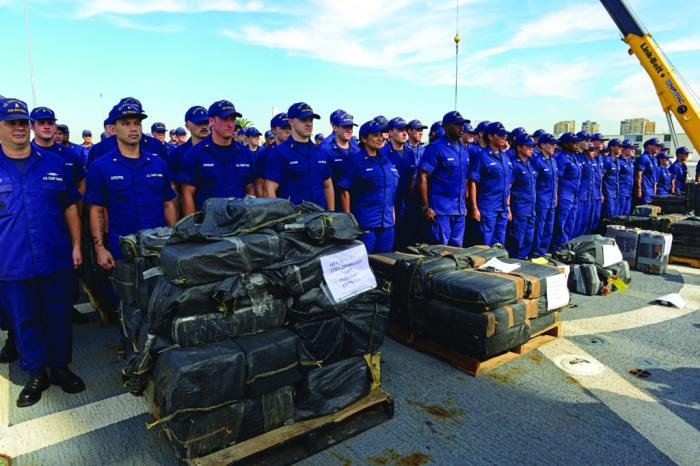
Maritime Law Enforcement Specialists (MLES) in the Coast Guard play a crucial role in ensuring the safety and security of U.S. waters and the maritime environment. Their duties extend far beyond simple patrols, encompassing a wide range of law enforcement activities, often in challenging and dynamic conditions.
Law enforcement activities performed by MLES are diverse and demanding, requiring a high level of skill, training, and judgment. They are responsible for upholding various laws and regulations, ensuring compliance, and responding to a variety of incidents at sea.
Law Enforcement Activities
The daily work of an MLES involves a multifaceted approach to maritime law enforcement. These specialists conduct boardings of vessels, investigate suspected criminal activity, enforce environmental regulations, and provide assistance to those in distress. They are frequently involved in search and rescue operations, acting as first responders in maritime emergencies. Their duties also include evidence collection and preservation, report writing, and court testimony. This demanding role requires extensive training in maritime law, investigation techniques, and self-defense.
Legal Authorities and Powers
MLES are granted significant legal authorities and powers under various federal statutes and regulations. They possess the authority to conduct vessel boardings, searches, and seizures, subject to the Fourth Amendment’s restrictions on unreasonable searches and seizures. These powers extend to enforcing laws related to drug smuggling, illegal immigration, fisheries violations, pollution, and other maritime crimes. They can issue citations, make arrests, and conduct investigations, ultimately presenting cases before the courts. Their actions are guided by strict adherence to the law and the Coast Guard’s established procedures. The specific legal basis for their actions often stems from laws such as the Jones Act, the Customs and Border Protection laws, and the various environmental protection statutes.
Challenges Faced During Operations
Maritime law enforcement operations present unique challenges. The unpredictable nature of the sea, including adverse weather conditions, can significantly impact operations. The vastness of the maritime domain and the potential for encounters with armed or hostile individuals pose considerable risks. Additionally, the complexities of international maritime law and the need for coordination with other agencies (such as Customs and Border Protection, the Drug Enforcement Administration, or foreign counterparts) add layers of difficulty. Resource limitations, including vessel availability and personnel constraints, can also affect the effectiveness of operations. The ever-evolving nature of criminal tactics and the sophistication of smuggling operations present ongoing challenges that require continuous adaptation and training.
Hypothetical Scenario: Vessel Boarding
A Coast Guard cutter receives intelligence indicating a suspicious vessel, the “Sea Serpent,” is suspected of illegal fishing within a protected marine sanctuary. The MLES team prepares for a boarding. They conduct a risk assessment, considering the vessel’s size, crew, and potential for resistance. Upon approaching the “Sea Serpent,” the MLES team identifies themselves, states their purpose, and requests permission to board. If permission is refused or if reasonable suspicion of illegal activity exists, they may lawfully board the vessel using established procedures. Once aboard, the MLES team conducts a thorough search, inspecting fishing gear, logs, and cargo. If illegal fishing activities are discovered (e.g., exceeding catch limits, using prohibited gear), evidence is meticulously documented and collected. The vessel’s captain and crew may be detained, and the vessel may be seized. The MLES team prepares a detailed report documenting the entire operation, including all evidence collected, and presents the findings to their superiors for further action. This may involve legal proceedings and potential penalties for the offenders.
Specialized Equipment and Technologies
Maritime law enforcement specialists in the Coast Guard utilize a wide array of specialized equipment and technologies to effectively perform their duties, ensuring the safety and security of our nation’s waterways. These tools are crucial for various operations, from search and rescue to drug interdiction and counter-terrorism efforts. Their effective use requires rigorous training and meticulous maintenance.
The integration of advanced technologies has significantly enhanced the capabilities of maritime law enforcement, allowing for quicker response times, improved situational awareness, and a greater overall effectiveness in tackling maritime threats.
Equipment Utilized in Maritime Law Enforcement
| Equipment Category | Specific Equipment | Function | Importance |
|---|---|---|---|
| Firearms | Handguns (e.g., Glock 17, SIG Sauer P320), Rifles (e.g., M4 Carbine, AR-15), Shotguns (e.g., Remington 870) | Provide defensive and offensive capabilities in high-risk situations, such as apprehending suspects or responding to armed threats. | Essential for officer safety and the successful completion of law enforcement actions. Proper training and adherence to strict protocols are paramount. |
| Communication Systems | VHF radios, satellite phones, encrypted communication systems | Enable clear and secure communication between officers, command centers, and other agencies. This is critical for coordinating operations and receiving real-time updates. | Maintaining effective communication is vital for efficient operations, especially during emergencies or in remote locations. Reliable communication systems are essential for situational awareness and coordinated responses. |
| Navigation Tools | GPS receivers, chart plotters, radar systems, electronic charting systems (ECS) | Provide precise location data, assist in navigation, and enhance situational awareness. These tools are essential for safe vessel operation and effective patrol strategies. | Accurate navigation is critical for ensuring the safety of personnel and assets. Modern navigation tools improve efficiency and precision in operations, leading to faster response times and improved safety. |
| Search and Rescue Equipment | Life rafts, life jackets, rescue boats, underwater search equipment (sonar, ROVs), thermal imaging cameras | Facilitate search and rescue operations in various environments and conditions. This equipment is crucial for locating and rescuing individuals in distress at sea. | The ability to effectively conduct search and rescue operations is a core function of the Coast Guard. Advanced equipment enhances the chances of successful rescues and minimizes risks to both rescuers and those in need. |
The Role of Technology in Modern Maritime Law Enforcement
Technology plays a pivotal role in enhancing the effectiveness and efficiency of modern maritime law enforcement. Advanced systems such as integrated command and control centers, improved sensor technologies (including thermal imaging and radar), and sophisticated data analytics tools provide enhanced situational awareness, enabling faster and more informed decision-making. Real-time tracking of vessels through Automatic Identification Systems (AIS) allows for proactive monitoring and rapid response to potential threats. Unmanned aerial vehicles (UAVs or drones) provide aerial surveillance capabilities, extending the reach and effectiveness of patrol efforts.
Maintenance and Training Related to Equipment
Proper maintenance and regular training are essential for ensuring the reliability and safe operation of all specialized equipment. Regular inspections, preventative maintenance schedules, and timely repairs are crucial for preventing equipment failure during critical operations. Comprehensive training programs ensure that personnel are proficient in the safe and effective use of all equipment, including firearms, communication systems, and search and rescue tools. This training includes both classroom instruction and hands-on practical exercises, simulating real-world scenarios.
Technological Advancements Improving Maritime Law Enforcement
Technological advancements have significantly improved maritime law enforcement operations. For instance, the widespread adoption of AIS has dramatically increased the ability to monitor vessel traffic and identify suspicious activity. The use of UAVs allows for rapid deployment of surveillance capabilities in areas difficult to reach by traditional vessels. Advanced sensor technologies, such as thermal imaging and radar, improve the detection of illicit activities, such as smuggling and illegal fishing. Improved data analytics tools allow for better pattern recognition and predictive policing, enabling proactive interventions and resource allocation. The integration of these technologies has led to increased efficiency, improved safety, and a greater overall effectiveness in combating maritime crime.
International Maritime Law and Cooperation
International maritime law forms the bedrock of Coast Guard operations, providing a legal framework for actions at sea and guiding interactions with other nations. It dictates jurisdictional boundaries, establishes standards for safety and environmental protection, and Artikels procedures for addressing maritime crimes and security threats. Without a strong understanding and adherence to this legal framework, Coast Guard operations would lack legitimacy and effectiveness on the global stage.
The effective enforcement of maritime law requires a nuanced understanding of its complexities and the need for collaboration. Coast Guard operations frequently involve navigating intricate legal landscapes, requiring specialists to interpret and apply international conventions and treaties within the context of specific situations. This necessitates a high level of legal expertise and the ability to work effectively with international partners.
Key International Treaties and Conventions
Several crucial international treaties and conventions underpin maritime law enforcement. These agreements establish common standards and procedures for various maritime activities, fostering cooperation and promoting a predictable legal environment. Non-compliance can lead to international incidents and sanctions.
The United Nations Convention on the Law of the Sea (UNCLOS), often referred to as the “constitution for the oceans,” is paramount. It defines maritime zones (territorial waters, exclusive economic zones, etc.), establishes navigational rights, and addresses resource management and environmental protection. Other significant conventions include the International Convention for the Safety of Life at Sea (SOLAS), which sets safety standards for ships, and the International Convention on Standards of Training, Certification and Watchkeeping for Seafarers (STCW), which regulates seafarer training and certification. These conventions, along with numerous others addressing specific aspects of maritime activity, collectively define the legal framework within which Coast Guard operations are conducted.
International Cooperation in Addressing Maritime Security Challenges
International cooperation is critical in addressing the multifaceted challenges to maritime security. These challenges, ranging from piracy and smuggling to terrorism and illegal fishing, often transcend national borders, requiring a coordinated and collaborative response. Information sharing, joint patrols, and combined operations are vital tools in combating these threats effectively. For instance, the Combined Maritime Forces (CMF), a multinational naval coalition, exemplifies successful international cooperation in addressing piracy and other maritime security threats in the Middle East. The CMF’s collaborative efforts have significantly reduced piracy incidents in the region.
Comparative Approaches to Maritime Law Enforcement
Different nations adopt varying approaches to maritime law enforcement, reflecting their unique geographic contexts, legal systems, and national priorities. Some nations prioritize a strong military presence at sea, while others emphasize diplomatic solutions and capacity building in partner nations. The United States Coast Guard, for example, combines a strong law enforcement presence with a focus on diplomacy and international cooperation. In contrast, some smaller nations might rely heavily on international partnerships for maritime security, lacking the resources for extensive independent operations. These diverse approaches highlight the complexity of global maritime governance and the need for flexible and adaptable strategies in international collaborations.
Safety and Risk Management
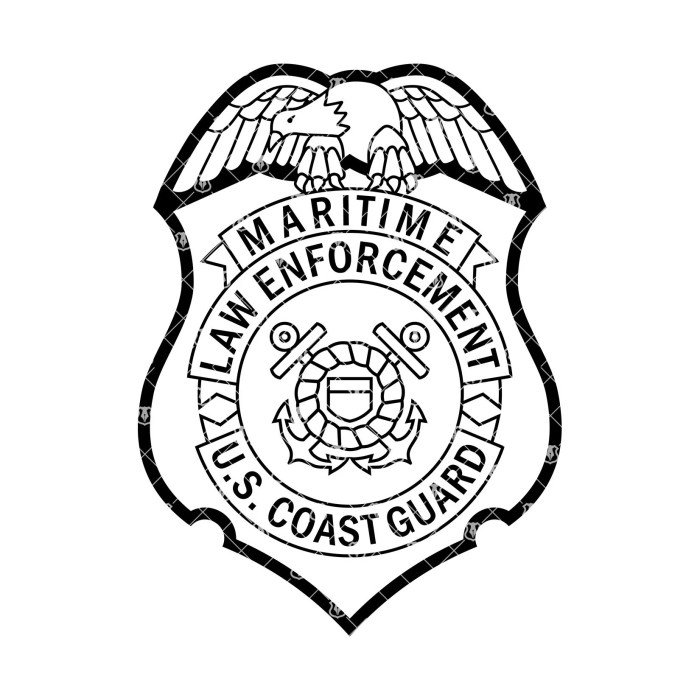
Maritime Law Enforcement Specialists face a unique set of challenges demanding a robust safety and risk management framework. Their work inherently involves high-risk situations at sea, requiring meticulous adherence to established protocols and a proactive approach to hazard mitigation. This ensures both the safety of the personnel and the successful completion of missions.
Safety procedures and protocols are paramount to the Coast Guard’s operations. These protocols are comprehensive and cover all aspects of maritime law enforcement, from boarding procedures and vessel inspections to search and rescue operations in challenging weather conditions.
Safety Procedures and Protocols
The Coast Guard employs a multi-layered approach to safety. This includes rigorous training programs, standardized operating procedures (SOPs), and the use of advanced safety equipment. SOPs detail every step of an operation, minimizing ambiguity and maximizing safety. Regular safety briefings and drills reinforce these procedures, ensuring that personnel are prepared for a wide range of scenarios. Furthermore, the use of personal protective equipment (PPE), such as life jackets, immersion suits, and safety harnesses, is mandatory during all operations. Detailed pre-mission planning, incorporating weather forecasts and risk assessments, is a critical component of ensuring safety.
Common Risks and Hazards
The inherent risks associated with maritime law enforcement are substantial and diverse. These include exposure to harsh weather conditions, the potential for collisions with other vessels, the risk of falls from heights on ships or during boarding operations, and the potential for violence or aggression from suspects. Furthermore, working with hazardous materials encountered during vessel inspections presents significant health risks. Exposure to contaminated waters or the handling of illegal substances requires specialized training and protective measures. The unpredictable nature of the marine environment and the potential for equipment malfunction also add to the overall risk profile.
Risk Assessment and Mitigation Strategies
Risk assessment is an integral part of every Coast Guard operation. A thorough assessment identifies potential hazards and evaluates their likelihood and severity. This evaluation informs the development of mitigation strategies, which are implemented to reduce or eliminate the identified risks. Mitigation strategies may involve altering operational plans, employing specialized equipment, or enhancing personnel training. For example, a risk assessment might identify a high risk of capsizing during a boarding operation in rough seas. Mitigation strategies could include delaying the operation until conditions improve, using a smaller, more maneuverable boat, or utilizing specialized equipment to enhance stability. Regular review and updates of risk assessments are crucial to adapt to changing conditions and improve safety.
Safety Training and its Contribution to Successful Operations
Comprehensive safety training is the cornerstone of successful operations. Coast Guard personnel undergo rigorous training in a variety of areas, including seamanship, navigation, first aid, and self-defense. Specialized training in areas such as hazardous materials handling, small boat operations, and advanced search and rescue techniques equips personnel to handle a wide range of situations. This training not only enhances safety but also improves the effectiveness and efficiency of operations. Regular refresher courses and advanced training programs ensure that personnel remain proficient and up-to-date on the latest safety protocols and techniques. Simulation exercises and real-world scenarios allow for practical application of learned skills, further enhancing safety and operational success.
Case Studies and Examples
The following case studies illustrate the diverse and challenging situations faced by Maritime Law Enforcement Specialists in the Coast Guard. These examples highlight the critical role these specialists play in ensuring maritime safety and security, upholding the law, and protecting national interests. They showcase both the operational complexities and the significant impact of their actions.
Operation Neptune’s Spear: Drug Interdiction
This case involved the interdiction of a suspected drug smuggling vessel off the coast of South America. A Coast Guard cutter, equipped with advanced sensors and surveillance technology, detected a suspicious vessel exhibiting evasive maneuvers. A Maritime Law Enforcement Specialist, acting as part of a boarding team, was deployed via rigid-hull inflatable boat (RHIB) to approach and board the target vessel. Upon boarding, the team discovered a large quantity of cocaine concealed within the vessel’s hull. The suspects were apprehended, the drugs seized, and the vessel impounded. The successful operation resulted in a significant blow to an international drug trafficking organization and prevented a large amount of narcotics from reaching the United States. The Maritime Law Enforcement Specialist’s expertise in maritime law, boarding techniques, and evidence handling were crucial to the successful outcome of this operation. The specialist’s calm demeanor under pressure and effective communication skills were also instrumental in ensuring the safety of the boarding team and the apprehension of the suspects without incident.
Operation Safe Harbor: Search and Rescue
In contrast to the drug interdiction operation, this case study highlights the Coast Guard’s role in search and rescue. A distress signal was received from a small fishing vessel caught in a severe storm. High seas and poor visibility hampered rescue efforts. A Maritime Law Enforcement Specialist, part of the rescue helicopter crew, played a critical role in locating the distressed vessel using advanced search patterns and night vision equipment. The specialist’s knowledge of maritime distress signals and emergency procedures allowed the crew to quickly assess the situation and prioritize the rescue. Once the fishing vessel was located, the specialist assisted in the safe evacuation of the crew, providing vital medical assistance to those suffering from hypothermia. The operation showcased the adaptability and diverse skillset of Maritime Law Enforcement Specialists, highlighting their contributions beyond law enforcement to encompass crucial search and rescue missions.
Comparative Analysis
Both Operation Neptune’s Spear and Operation Safe Harbor demonstrate the multifaceted nature of the Maritime Law Enforcement Specialist role. While Operation Neptune’s Spear focused on law enforcement and drug interdiction, Operation Safe Harbor highlighted the critical role of these specialists in search and rescue. Both operations, however, relied on specialized equipment, advanced training, and the ability to operate effectively in challenging and dangerous environments. The successful outcomes in both cases underscore the importance of thorough training, effective teamwork, and the application of specialized knowledge in maritime operations.
Lessons Learned
- The importance of advanced training in maritime law, boarding techniques, and search and rescue procedures.
- The crucial role of specialized equipment and technology in enhancing operational effectiveness and safety.
- The necessity of effective teamwork and communication in high-pressure situations.
- The adaptability and diverse skillset required of Maritime Law Enforcement Specialists to handle various operational scenarios.
- The significance of maintaining a calm and professional demeanor under pressure to ensure the safety of personnel and the success of the operation.
Future Trends in Maritime Law Enforcement
The maritime domain faces an evolving landscape of threats and challenges, demanding continuous adaptation from maritime law enforcement agencies like the Coast Guard. Technological advancements are rapidly reshaping the operational environment, presenting both opportunities and complexities for maintaining security and upholding the rule of law at sea. Understanding these trends is crucial for effective future planning and resource allocation.
Emerging Threats and Technological Advancements are significantly impacting maritime law enforcement. The increasing sophistication of transnational criminal organizations, coupled with advancements in technology, poses a considerable challenge. For example, the use of unmanned aerial vehicles (UAVs) for smuggling and the exploitation of dark web marketplaces for illicit maritime activities demand innovative countermeasures.
Emerging Threats to Maritime Security
The rise of sophisticated transnational criminal organizations utilizing advanced technologies to conduct illicit activities at sea presents a significant challenge. These include drug trafficking networks leveraging encrypted communication and fast, agile vessels, as well as human smuggling operations employing deceptive tactics and exploiting vulnerable populations. Furthermore, the potential for terrorist attacks targeting maritime infrastructure or vessels remains a persistent concern. These threats necessitate proactive intelligence gathering, enhanced surveillance capabilities, and collaborative international efforts to effectively counter them. The increasing use of autonomous vessels, while offering potential benefits, also introduces vulnerabilities that need to be addressed through enhanced cybersecurity measures and regulatory frameworks.
Technological Advancements in Maritime Law Enforcement
Technological advancements are transforming maritime law enforcement operations. Improved sensor technologies, such as advanced radar systems and satellite imagery, enhance surveillance capabilities and enable early detection of suspicious activities. The development of unmanned surface vehicles (USVs) and underwater drones offers increased flexibility and efficiency in search and rescue operations, as well as in the detection and interdiction of illicit activities. Furthermore, the integration of big data analytics and artificial intelligence (AI) allows for more effective pattern recognition and predictive policing strategies. For example, AI-powered systems can analyze vast amounts of data from various sources to identify potential threats and predict likely smuggling routes, improving resource allocation and operational efficiency.
The Role of Artificial Intelligence and Automation
Artificial intelligence (AI) and automation are poised to play a transformative role in maritime law enforcement. AI-powered systems can analyze vast amounts of data from various sources, including radar, satellite imagery, and vessel tracking systems, to identify patterns and anomalies indicative of illicit activities. This can significantly improve the efficiency of surveillance and intelligence gathering. Automation can also enhance the effectiveness of various operations, such as automated vessel identification systems and autonomous patrol vessels. However, the implementation of AI and automation requires careful consideration of ethical implications and the need for human oversight to ensure accountability and prevent unintended consequences. For instance, the development of robust cybersecurity protocols is crucial to protect AI systems from malicious attacks and manipulation. The integration of human expertise with AI capabilities is key to maximizing effectiveness and mitigating risks.
Predictions for the Future of Maritime Law Enforcement within the Coast Guard
The Coast Guard will likely see an increased reliance on AI and automation in its operations. This will involve the deployment of advanced sensor technologies, unmanned systems, and data analytics to enhance situational awareness and operational efficiency. There will be a greater emphasis on international collaboration and information sharing to combat transnational criminal activities. Cybersecurity will become an increasingly critical aspect of maritime law enforcement, requiring specialized training and resources to protect critical infrastructure and data. Finally, the Coast Guard will need to adapt its training and recruitment strategies to meet the evolving technological demands of the profession, ensuring that personnel possess the skills and knowledge necessary to effectively operate and maintain advanced technologies. One example is the increasing integration of drone technology into Coast Guard operations, allowing for quicker response times and more efficient search and rescue efforts, mirroring similar advancements in other law enforcement agencies.
Conclusive Thoughts

The Maritime Law Enforcement Specialist in the Coast Guard represents a vital intersection of law enforcement, maritime expertise, and unwavering commitment to national security. Their multifaceted role, demanding training, and crucial contributions to international cooperation highlight the importance of this critical profession. As technology continues to evolve and maritime threats adapt, these specialists will remain at the forefront, safeguarding our nation’s maritime interests and ensuring the safety and security of our waters for years to come. The dedication and skill of these individuals ensure our seas remain secure and navigable.
Questions Often Asked
What is the starting salary for a Maritime Law Enforcement Specialist?
The starting salary varies based on experience and location but generally falls within a competitive range for federal law enforcement positions.
What are the physical fitness requirements?
Applicants must meet stringent physical fitness standards, including swimming and endurance tests, reflecting the physically demanding nature of the job.
What opportunities for advancement exist?
Career progression within the Coast Guard offers opportunities for promotion to higher ranks and specialized roles, potentially leading to leadership positions.
How long is the training period?
The training program is extensive and typically lasts several months, encompassing both classroom instruction and hands-on field training.
